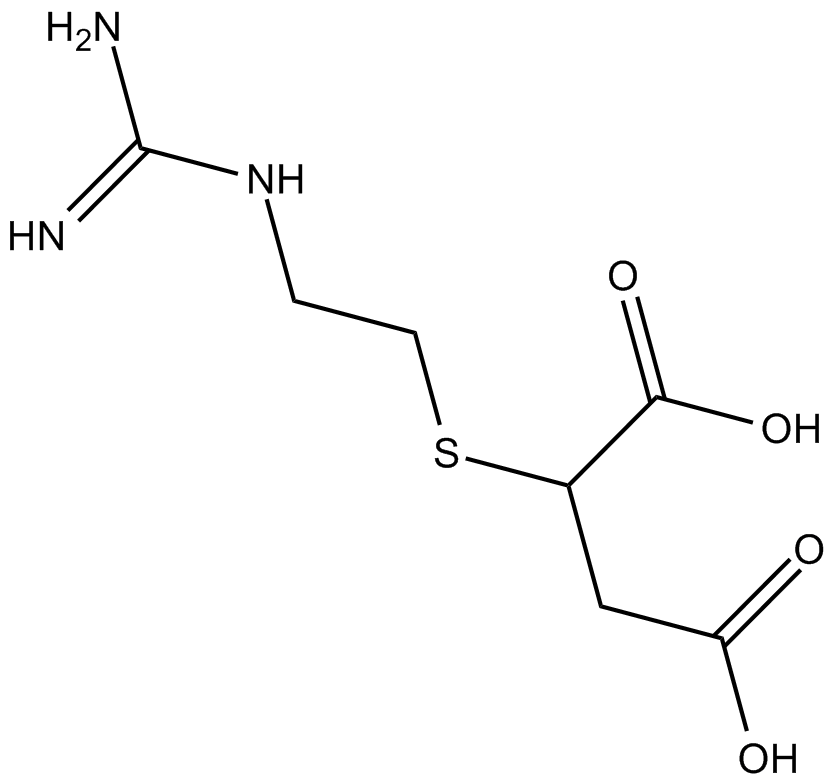2-Guanidinoethylmercaptosuccinic Acid (Synonyms: GEMSA) |
| Catalog No.GC11804 |
2-Guanidinoethylmercaptosuccinic Acid (2-Guanidinoethylmercaptosuccinic acid) is a potent specific inhibitor of carboxypeptidase B-like processing enzyme (encephalin convertase) with the Ki value of 8.8 nM.
Products are for research use only. Not for human use. We do not sell to patients.

Cas No.: 77482-44-1
Sample solution is provided at 25 µL, 10mM.
Ki: 8.8 nM
2-Guanidinoethylmercaptosuccinic acid is a carboxypeptidase E inhibitor.
Carboxypeptidase E, also known as enkephalin convertase, can remove C-terminal residues during the processing of propeptides, such as enkephalin and proinsulin.
In vitro: 2-Guanidinoethylmercaptosuccinic acid was identified as a biproduct analogs of lysine and arginine that showed potent inhibitory effect on enkephalin convertase with the Ki value of 8.8 nM. In addition, 2-guanidinoethylmercaptosuccinic acid was found to be several hundred fold more potent towards enkephalin convertase than towards carboxypeptidase B or N and the kinetic analyses indicated the pure competitive nature of the inhibition [1].
In vivo: Previous study found that following the intrathecal administration of 2-guanidinoethylmercaptosuccinic acid at 12.5, 25 and 50 micrograms, an increase in the tail-flick latency was seen. In addition, 2-guanidinoethylmercaptosuccinic acid could potentiate the analgesic effects of the intrathecally applied Met5-enkephalin-Arg6-Phe7 and Met5-enkephalin-Arg6-Gly7-Leu8. All these effects of 2-guanidinoethylmercaptosuccinic acid were significantly attenuated by the treatment of naloxone. Moreover, the rats subjected to chronic pain showed a weaker analgesic response to the treatment of 2-guanidinoethylmercaptosuccinic acid. Furthermore, 2-guanidinoethylmercaptosuccinic acid bound to enkephalin convertase in the spinal cord of these rats produced only a slight increase in KD [2].
Clinical trial: Up to now, 2-guanidinoethylmercaptosuccinic acid is still in the preclinical development stage.
References:
1. Fricker LD, Plummer TH Jr, Snyder SH. Enkephalin convertase: potent, selective, and irreversible inhibitors. Biochem Biophys Res Commun. 1983 Mar 29;111(3):994-1000.
2. M. Bommer, K. Nikolarakis, E. P. Noble, et al. In vivo modulation of rat hypothalamic opioid peptide content by intracerebroventricular injection of guanidinoethylmercaptosuccinic acid (GEMSA): Possible physiological role of enkephalin convertase. Brain Research 492(1-2), 305-313 (1989).
Average Rating: 5 (Based on Reviews and 5 reference(s) in Google Scholar.)
GLPBIO products are for RESEARCH USE ONLY. Please make sure your review or question is research based.
Required fields are marked with *




















